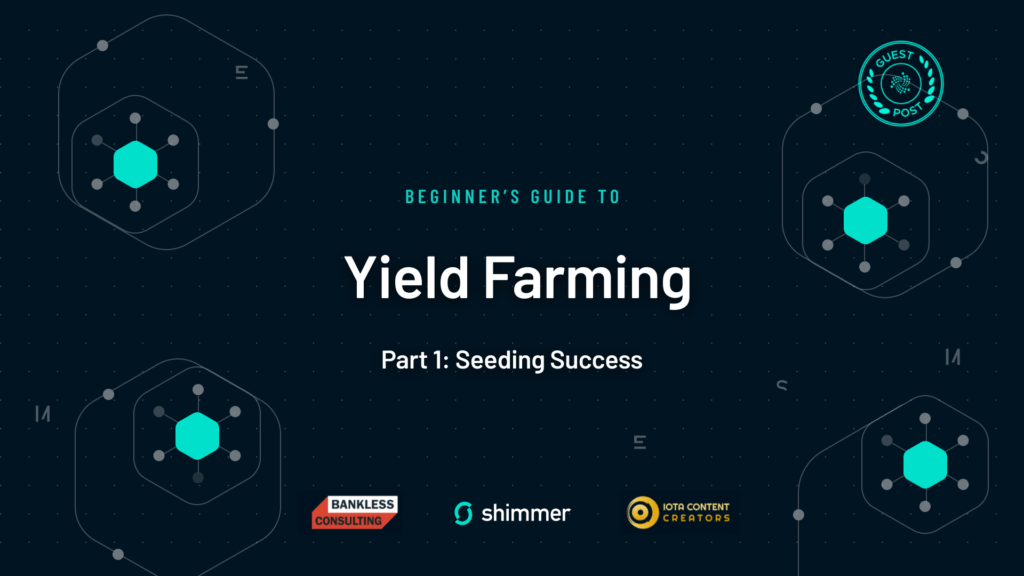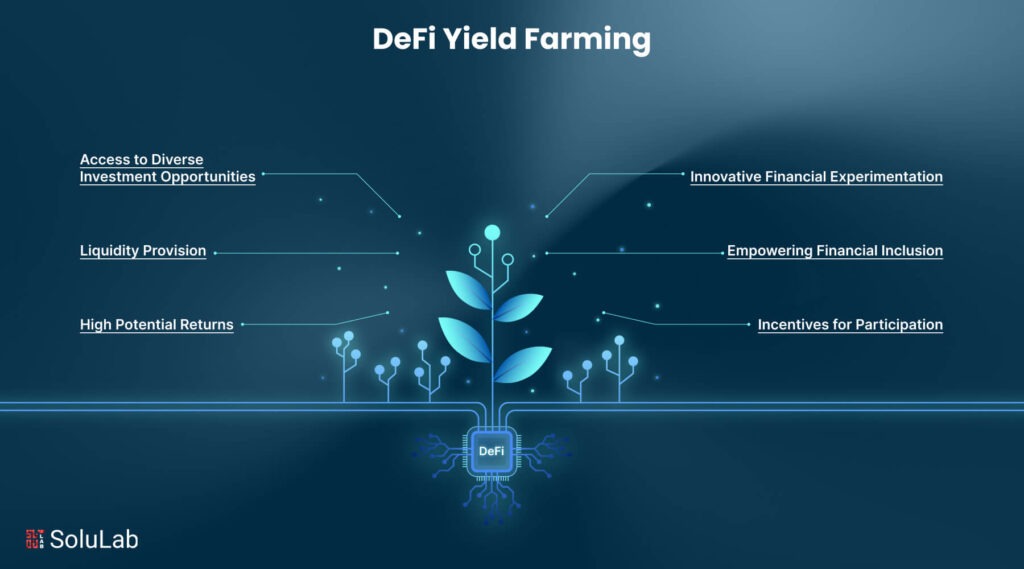What if you could put your cryptocurrency to work and earn returns beyond what traditional savings accounts offer? In the rapidly evolving world of decentralized finance (DeFi), yield farming presents an exciting opportunity for you as an investor. This comprehensive guide will walk you through the intricate concept of yield farming, helping you understand each aspect so you can make informed decisions.

Understanding Yield Farming
Yield farming can often be described as the process of earning interest on cryptocurrency holdings by locking them into a liquidity pool. Essentially, you lend your crypto assets in exchange for rewards, often in the form of additional tokens. Before diving deeper, it’s essential to differentiate yield farming from traditional investing.
The Basics of Yield Farming
At its core, yield farming involves the utilization of blockchain technology to provide liquidity to various DeFi platforms. Here, you can lend your funds to others, facilitating transactions in return for interest and rewards. You may encounter platforms such as Compound, Aave, or Uniswap while engaging in yield farming, each offering unique liquidity pools.
Key Terms You Should Know
Before you embark on your yield farming journey, it is crucial to familiarize yourself with some key terminology:
| Term | Definition |
|---|---|
| APY (Annual Percentage Yield) | The rate of return on your investment over a year, accounting for interest on interest. |
| Liquidity Pool | A collection of funds locked in a smart contract for trading or lending. |
| Smart Contract | A self-executing contract with the terms of the agreement directly written into code. |
| Impermanent Loss | A potential loss that occurs when the price of tokens in a liquidity pool changes compared to when they were deposited. |
How Yield Farming Works
To fully understand yield farming, you need to grasp how it operates on the blockchain.
The Role of Liquidity Providers
As a participant, you become a liquidity provider by contributing your assets to a liquidity pool. This pooling of assets enables users to borrow or trade without needing an intermediary. By doing this, you receive tokens representing your share of the pool and potential rewards.
Earning Rewards
The rewards you earn through yield farming can vary significantly based on several factors such as the platform used, the assets provided, and the overall market conditions. Common forms of rewards include:
- Interest Payments: You receive periodic interest for lending your assets.
- Token Rewards: Some platforms distribute their native tokens as incentives to liquidity providers.
Compound Interest
Your earnings can compound over time, allowing you to earn interest on both your initial investment and any rewards received. This is calculated using the APY, which reflects your potential returns over a year.
Step-by-Step Guide to Yield Farming
If you’re considering participating in yield farming, follow these steps to get started.
Step 1: Choose Your Cryptocurrency Wallet
Before you can begin yield farming, selecting a compatible cryptocurrency wallet is essential. This wallet will store your assets and facilitate transactions:
- Look for wallets that support Ethereum or Binance Smart Chain since many DeFi platforms operate on one of these chains.
- Consider wallets with strong security features to protect your investments.
Step 2: Acquire Cryptocurrency
Once you have a wallet set up, you’ll need to acquire cryptocurrency, preferably Ethereum (ETH) or a stablecoin like USDC or DAI. You can purchase these on exchanges like Binance, Coinbase, or Kraken. Take the time to research which platform is suitable for your region.
Step 3: Select a Yield Farming Platform
With cryptocurrency in hand, the next step involves choosing a yield farming platform. Popular options include:
- Uniswap: A decentralized exchange (DEX) where you can provide liquidity for trading pairs.
- Compound: A lending platform where you can earn interest by supplying assets.
- Aave: Another lending protocol that offers various features including flash loans.
Step 4: Provide Liquidity
After selecting a platform, navigate to the liquidity section, and provide your assets. In most cases, you will need to pair your token with another asset (often ETH or a stablecoin). Once completed, you will receive liquidity provider (LP) tokens representing your stake.
Step 5: Harvest Rewards
The final step is to claim any rewards you earn. Depending on the platform, you may have to manually claim rewards, or they might be automatically added to your balance. Be mindful of transaction fees when harvesting your rewards.
Risks Associated with Yield Farming
While yield farming can yield attractive returns, it’s vital to remain aware of the potential risks involved.
Smart Contract Risks
Smart contracts are foundational to yield farming, but they come with vulnerabilities. Bugs in the code could potentially lead to loss of funds. Conduct due diligence on the platforms you choose, including reviewing audits of their smart contracts.
Impermanent Loss
As previously mentioned, impermanent loss occurs when token prices fluctuate while you have them locked in a liquidity pool. You can mitigate this risk by understanding the assets involved and monitoring market conditions regularly.
Regulatory Risks
The DeFi space is still relatively new, and regulations are evolving. Future government intervention could impact your returns and the platforms on which you participate. Stay informed about the regulatory environment in your jurisdiction.

Maximizing Your Yield Farming Returns
To make the most of your yield farming activities, consider the following strategies.
Diversifying Your Investments
Instead of concentrating your assets in a single liquidity pool, diversify your investments across different platforms and assets. This strategy helps spread risk while optimizing potential returns.
Monitoring Market Conditions
Stay abreast of changing market conditions and interest rates. Shifts in demand or asset price fluctuations can influence the returns on your yield farming investments. Make adjustments to your strategy as necessary.
Participating in Governance
Many DeFi platforms allow liquidity providers to participate in governance decisions. Engaging in these discussions can give you insight into the platform’s future direction and help you make informed decisions about your investments.
Tools and Resources for Yield Farmers
Arming yourself with the right tools and resources is crucial to successful yield farming.
Analytics Platforms
Utilize analytics tools to track your investments and assess returns. Platforms such as DeFi Pulse and Dune Analytics provide valuable insights into yield farming opportunities and overall market conditions.
Community Forums
Engage with the yield farming community through forums like Reddit or Discord. These platforms enable you to exchange ideas, learn from others, and gain fresh perspectives on your yield farming strategies.
Educational Resources
Leverage educational resources such as blogs, webinars, and online courses to enhance your understanding of yield farming. Knowledge about the technology, risks, and strategies involved can significantly improve your chances of success.

Future of Yield Farming
Yield farming is a dynamic sector within the larger DeFi ecosystem that continues to evolve rapidly. By staying informed about trends and developments, you can position yourself to benefit from new opportunities that arise.
Potential Enhancements and Innovations
Expect technological advancements and potential regulatory changes in the coming years. Innovations such as layer 2 solutions and cross-chain farming could enhance user experience and expand yield farming opportunities.
Long-Term Viability of Yield Farming
While the yields from yield farming may attract many investors, the long-term sustainability of these high returns remains under scrutiny. As you consider participating, keep an eye on how platforms are managing liquidity and interest rates over time.
Conclusion
Yield farming offers a compelling strategy for you to maximize returns on your cryptocurrency investments. By understanding how yield farming operates, evaluating associated risks, and employing effective strategies, you can position yourself for success in this fast-paced environment. Remember, research is key—stay informed and adapt your strategies as the landscape evolves, ensuring that your yield farming venture remains rewarding and aligned with your financial goals.



 Bitcoin
Bitcoin  Ethereum
Ethereum  XRP
XRP  Tether
Tether  USDC
USDC  Lido Staked Ether
Lido Staked Ether